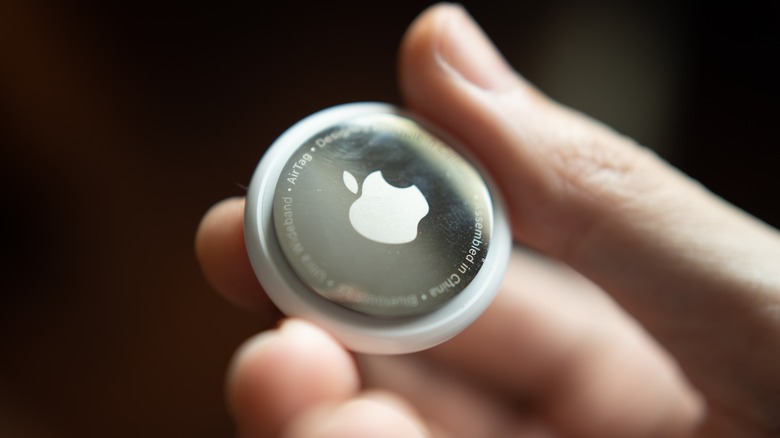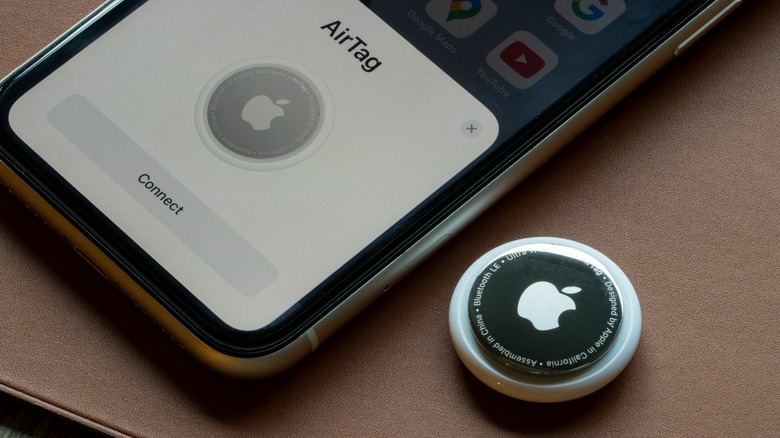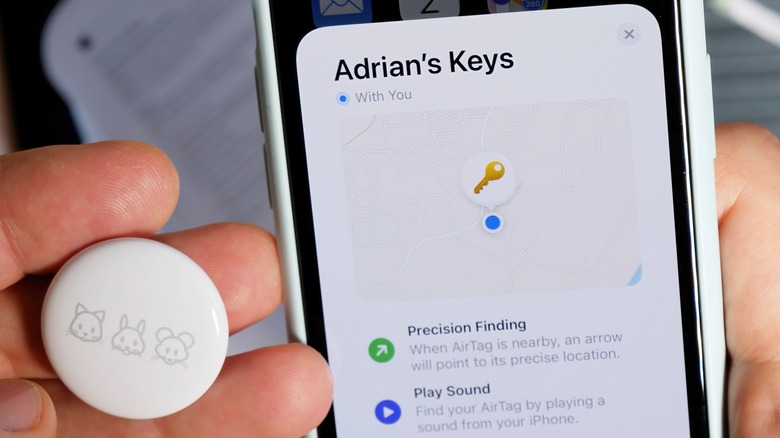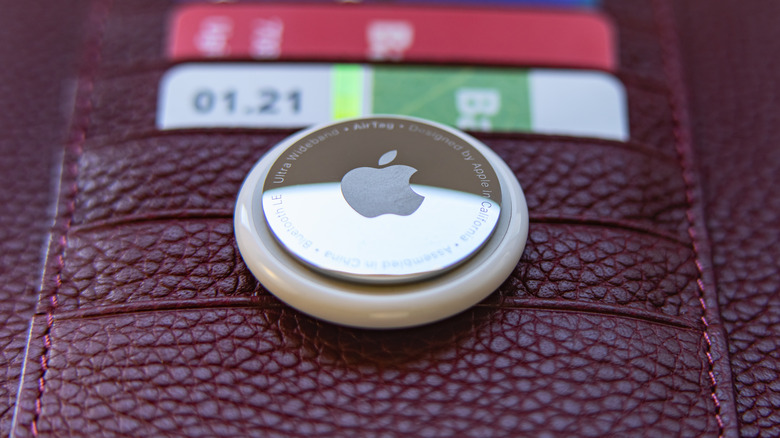How Far Does An Apple AirTag Reach?
In April 2021, Apple released one of the most popular tracking devices: the AirTag. Although there are other portable trackers in the market, features like IP67 water resistance and ultra-wideband connectivity make it stand out from other trackers on the market. On top of that, AirTag connects seamlessly with iPhones. To pair them, you just have to remove the battery tab on the device and hold it near your iPhone. Within seconds, you should see a dialogue box on your iPhone's screen: tap on connect, choose a name, and you're good to go. Doing this registers the device to your Apple ID and starts showing up in the "Find My" app.
Given the size of AirTag, you can attach one to your keys, slip it in your handbag, hide one in your wallet, or place it in your travel bag, and just like that, there's a personal radar on anything you choose. But how far can an AirTag reach? That's a question that pops up. Apple doesn't provide a clear explanation of the maximum tracking range of an AirTag, but there are connectivity options available on the AirTag. Apple has equipped the device with Bluetooth for proximity finding, its in-house U1 chipset that accesses ultra wideband for Precision Finding, and NFC that helps interact with iPhones.
What's the Bluetooth range of AirTags
To set up an AirTag, you need to enable Bluetooth on your iPhone, which means that the tracking device relies on Bluetooth connectivity, at least when in proximity. This means that the AirTag needs to be within 33 feet or 10 meters, because that is the maximum Bluetooth range of an iPhone. However, you should also remember that Bluetooth connectivity depends on several factors, like walls between the devices. Nevertheless, with a clear line of sight, iPhone's Bluetooth connection works fine in the range mentioned above.
Now, 33 feet, or 10 meters, is generally considered the range for Class 2 Bluetooth chips, commonly used in Bluetooth headphones, earbuds, and even trackers. To summarize, you can track your AirTag using Bluetooth technology if it's 10 meters or closer, which should be enough for tracking items indoors. For instance, if you've attached an AirTag to your car keys, your iPhone can communicate with the AirTag using Bluetooth. Then, if you have an iPhone 11 or later with a U1 chip, you also have Precision Tracking available as the "Find Nearby" option in the Find My app.
If your AirTag is in the Bluetooth range, you can play a sound via the Find My app to locate it (via osxdaily). The AirTag has a built-in speaker, which is loud enough to grab your attention indoors unless it is under a pile of clothes or sofa cushions.
What if an AirTag is outside your iPhone's Bluetooth range
But what if you lose a tagged device and it's not in Bluetooth range anymore? In that case, AirTags rely on the ever-growing Find My network of Apple devices. As of Jan. 28, 2022, there are more than 1.8 billion Apple devices worldwide (via TheVerge), which can communicate with each other and help locate lost devices. Hence, if you misplace a tagged device or it's stolen, you can use the Find My app to mark it as lost and wait for another Apple device to locate it.
Once an Apple device comes within the AirTag's Bluetooth range, it updates the estimated location of the AirTag on the Find My network. You can also see this device's location in the Find My app. Then you can head to the location and find your device using Bluetooth and Precision Finding. Hence, considering the global presence of the Find My network, AirTags can be located even when they are on the other side of the world, provided there are other Apple devices nearby (via Apple).
Apple also lets other users locate a lost AirTag through Bluetooth and Precision Finding. Once someone reaches your AirTag, they can tap their iPhone on the AirTag to get an on-screen message via NFC. This message contains your name, contact details, and any other note you would like to show up.
Things to keep in mind while using an AirTag
If the AirTag is in a secluded area without any Apple devices, the Find My network will inform you about its last tracked location along with a timestamp. However, you will receive a notification when the location is available again. Speaking of Precision Tracking, the technology is not available in certain countries, including Armenia, Belarus, Nepal, Russia, and Ukraine. You can see the complete list of countries where ultra-wideband isn't available here.
AirTags are great for tracking personal belongings, but unlike other Apple devices such as iPhones and Apple Watch, they do not have GPS functionality (via safewise). Additionally, AirTags do not support SIM cards or eSIM either. This means that an AirTag cannot determine its own location. The nearby Apple device helps find the tracker. Don't expect an AirTag to provide a real-time location for the lost item. If you want a more comprehensive tracking solution, go for GPS-enabled trackers.
Are their trackers with better Bluetooth range than AirTag? Yes, there's one called Tile Mate that offers a Bluetooth range of 250 feet, or 76 meters, which is more than seven times that of an AirTag. The South-Korean tech giant Samsung also created small trackers called SmartTag that have a Bluetooth range of up to 400 feet, or 120 meters. But none of these devices support the Apple Find My network.



